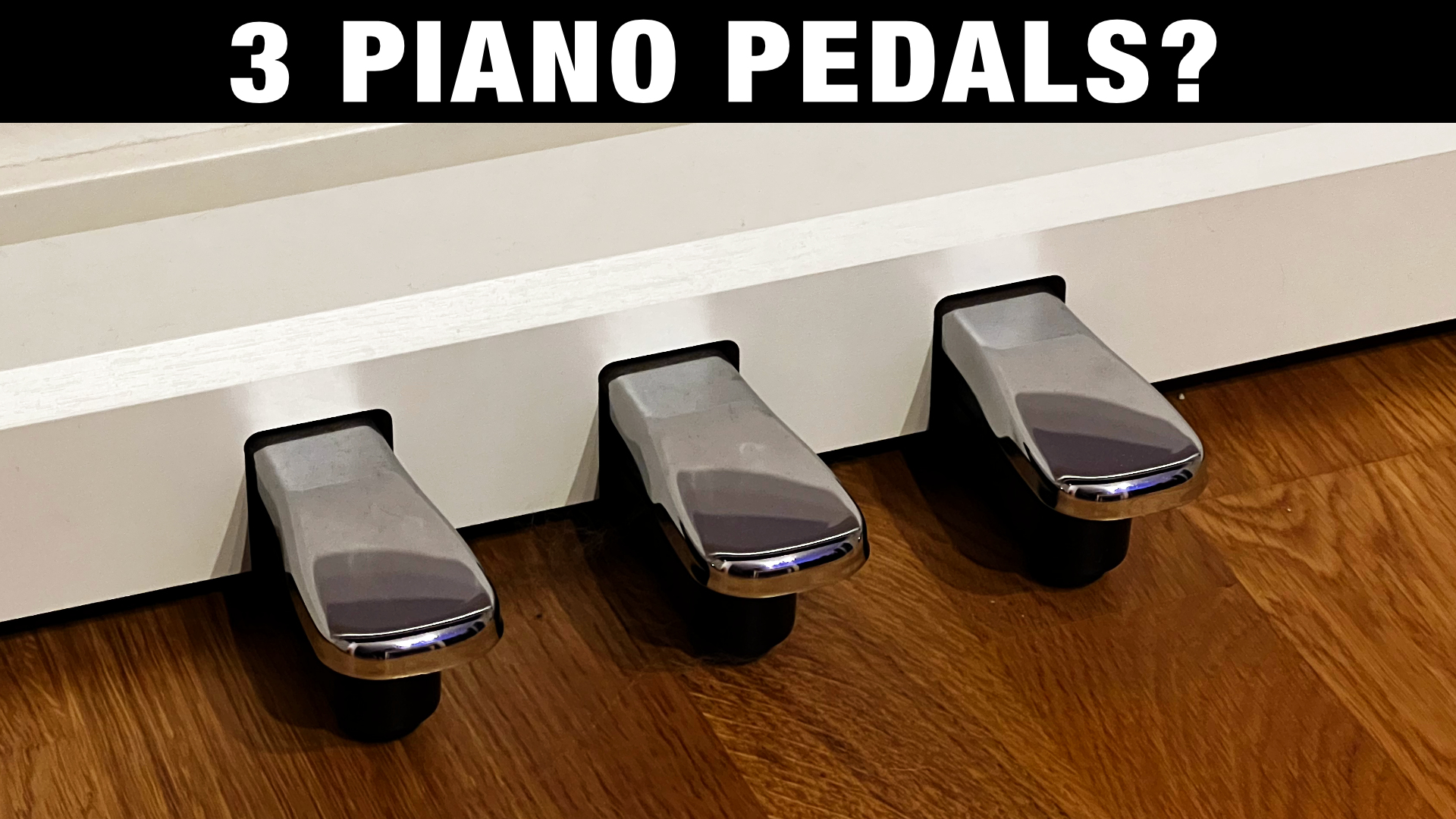Do you know what the 3 different Piano Pedals do?
I have played the piano since a kid, and I still basically only used the right pedal, which is the sustain pedal. Do you mainly use the sustain pedal as well when you play piano?
Yes, the sustain pedal is by far the most commonly used one, but have you wondered what this pedal actually does inside the piano that changes the sound? And what exactly do the other 2 pedals do, and how do you use them?
Let’s explore the 3 piano pedals:
What does the Sustain Pedal do on a Piano?
The sustain pedal (also known as the damper pedal or the pedal) is the most commonly used pedal on a piano. It is the pedal on the right when facing the piano and is operated by the right foot.
When the sustain pedal is pressed down, it lifts the dampers off of the strings of all the keys, allowing them to vibrate freely and produce a sustained sound.
When the pedal is released, the dampers return to their original position and dampen the strings, causing the sound to stop.
The sustain pedal is typically used to add expression and continuity to a piece of music by allowing notes to ring out and blend together.
What does the Sostenuto Pedal do on a Piano?
The sostenuto pedal (also known as the middle pedal) is the pedal in the middle when facing the piano and is operated by the left foot.
It functions similarly to the sustain pedal, but only affects the notes that are being held down at the moment the pedal is pressed.
When the sostenuto pedal is pressed, the dampers are lifted off of the strings of the keys that are being held down, allowing them to sustain.
The sostenuto pedal is not commonly used in most pieces of music and is often left unused.
What does the Una Corda Pedal do on a Piano?
The una corda pedal (also known as the soft pedal) is the pedal on the left when facing the piano and is operated by the left foot.
It is used to soften the sound of the piano by shifting the hammers closer to the strings, resulting in a lighter and more delicate tone.
In some pianos, the una corda pedal also moves the entire action (the mechanism that transfers the force of the player’s fingers to the hammers) slightly to the right, allowing the hammers to strike fewer strings or a different set of strings.
The una corda pedal is often used to add subtlety and nuance to a piece of music.
What about Digital Pianos and MIDI Keyboards?
Now most of us don’t have a real acoustic piano at home. We have digital pianos, and/or MIDI keyboards.
On digital pianos you most often get the pedals as part of the package, and a good digital piano should have all 3 pedals. And you can sometimes reprogram what these pedals do on the internal sounds.
With MIDI keyboards you have to buy an external sustain pedal, and attach it to the keyboard. Some professional piano-weighted MIDI keyboards may even support a 3-pedal module.

